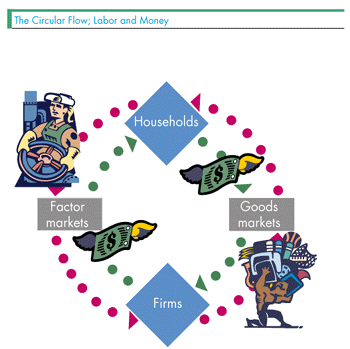Chapter 21
Once we realize that the expenditure flows depend on the income flows and that the income flows depend upon the expenditure flows, a remarkable and valuable insight become clear: Anything that affects people's incomes will affect their expenditures. In other words, anything that affects the factors of production that move from households to firms will affect the goods and services that move from firms to households. Intuitively, this result means that the overall supply of goods and services is not always independent of the overall demand for the goods and services. Unlike the microeconomic supply and demand model that we studied in previous chapters, in which we assumed that the factors that shifted the demand curve do not usually shift the supply curve, macroeconomics is more complicated: factors that affect the overall supply of goods and services may also affect the overall demand for goods and services. So, we will need to be alert for this complication later in the course when we study these issues.
The circular flow discussion on this page and in the textbook is probably not the most crucial material you will cover in the course. But, if you want some practice with it, you can use the Study Guide to accompany the textbook. Work True or False questions 1; Multiple Choice question 1; and Short Answer question 1. Be sure not to miss any of these questions. Would you like to study another chapter? |

